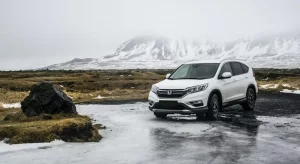The current employment situation in the US is not universally positive. However, for professional drivers who are willing to get the advanced training and special licenses needed in a variety of positions, the outlook has never been better. One reason is the fallout from the recent pandemic, during which millions of consumers discovered the benefits of delivering household goods, meals, and countless other products.
The result was an explosion of opportunities for self-employed drivers who wanted to earn extra cash or build an entire career behind the wheel.
Besides a concurrent expansion of passenger van services, the employment field for drivers includes a shortage of fleet operators, medical transporters, tour bus professionals, virtual mapping experts, and auto dealership couriers. The career field continues to morph and grow with each passing year. As the national economy changes, the following areas are likely going to be at the forefront of opportunities for hard-working adults who drive for a living.
Passenger Van Services
Demand for passenger vans that carry small groups of travelers from airports to their hotels and other venues is growing. Not only do families and company groups use the services regularly, but the industry has sprung up in response to increased domestic travel, the high cost of renting personal automobiles, and the desire for personalized transportation among vacationers and business travelers.
Some providers own just one or two automobiles, while larger operations in major urban areas have huge fleets. For drivers who hold chauffeur’s licenses, there are job openings in cities of all sizes, particularly tourist areas, towns near national parks, and residential zones near large airports.
Commercial Fleets
Across the US, commercial transport companies are struggling to find competent, qualified fleet managers, drivers, dispatchers, and other industry professionals to fill vital roles within their organizations. Companies that use trucks, vans, buses, small pickups, SUVs, and various types of automobiles to complete their duties have their work cut out for them. Prospective fleet managers should be ready to oversee tasks like monitoring DVIRs, or driver vehicle inspection reports, daily. Additionally, those who supervise commercial fleets must understand how to use DVIRs to keep track of all potential mechanical issues with vehicles, including all forms of defects and safety-related situations.
The FMCSA (Federal Motor Carrier Safety Administration) mandates that all drivers and their supervisors maintain the reports, but the records are a valuable tool for management teams. DVIRs give transport company decision-makers powerful data that can help maximize revenue and minimize downtime. If you oversee a fleet, learn all the pertinent details about DVIRs, how the reporting cycle works, and what the various exceptions are. There’s no better way to stay up to date about the state of your company’s vehicles and driving teams.
Medical Transport
As the US population is increasingly made up of older individuals, the number of retired and elderly citizens is growing at a fast rate. One of the inevitable results is a rising demand for specialized medical transportation. Med-vans are becoming more common on the roads of urban and suburban regions. Drivers need to know how to assist disabled and infirm riders who subscribe to the services.
That’s why multiple companies are springing up that offer short training courses and certification classes for medical van operators. The jobs pay well and offer workers the chance to drive part-time or full-time. Because the need is pretty much a year-round, continuous phenomenon in larger cities, trained med-van operators can choose their schedules and earn a decent wage after completing a month-long training course.
Virtual Mapping Cars
Several companies use standard passenger automobiles to perform video mapping of the entire US roadway systems. Their cars move along at the speed limit in every city and town, 24 hours per day, every day of the week. The cottage industry has spawned an immediate need for safe, licensed drivers to fill openings.
While there are training courses, most companies do not require their operators to obtain special licenses. Plus, most of the instructional hours take place on company campuses during the first two weeks of a new hire’s tenure. Along with tour bus openings and the continuing need for auto dealership car transporters, the mapping niche is one of the fastest-growing areas for individuals who like to drive and earn a reasonable wage at the same time.






